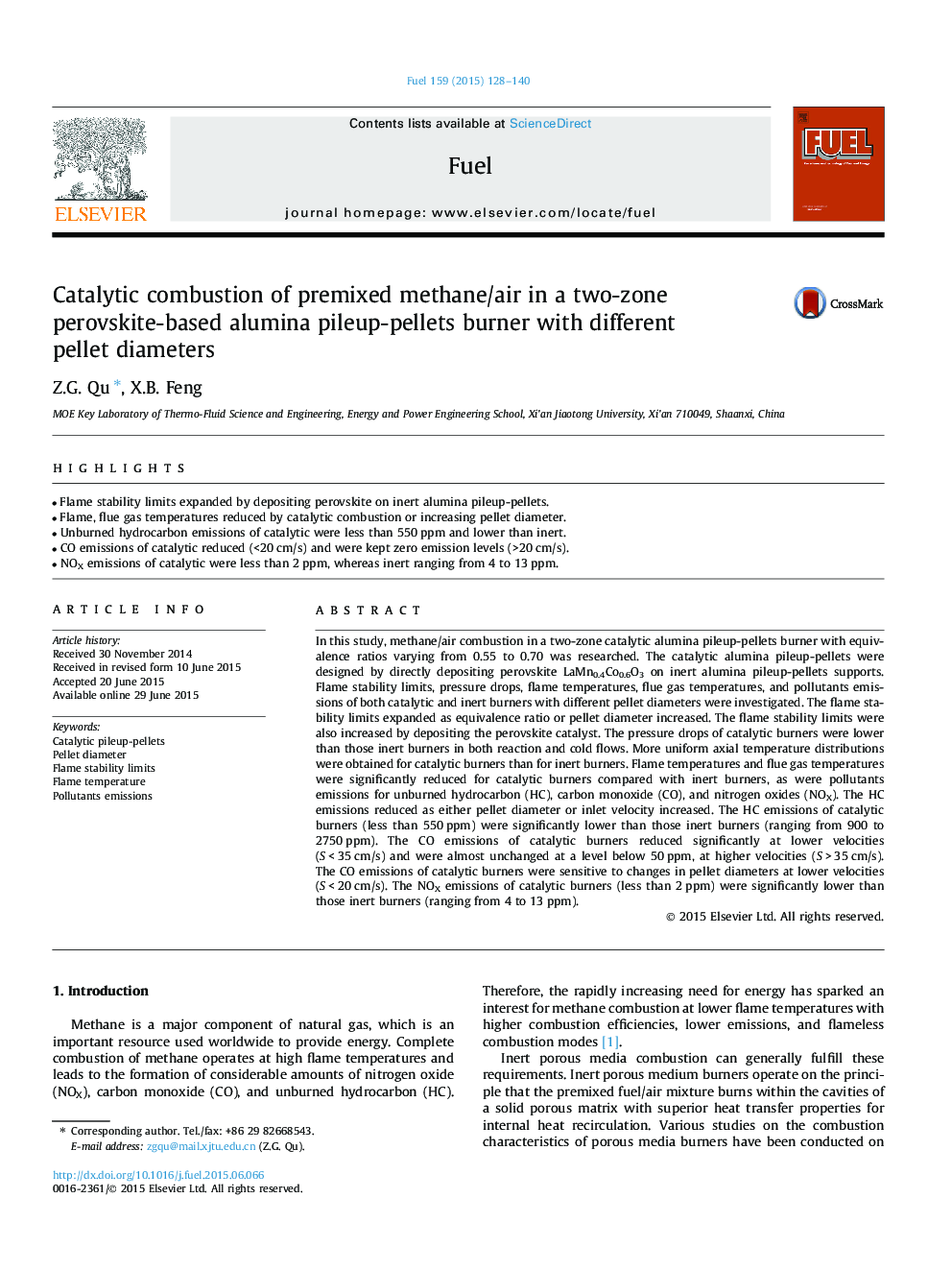| Article ID | Journal | Published Year | Pages | File Type |
|---|---|---|---|---|
| 6634572 | Fuel | 2015 | 13 Pages |
Abstract
In this study, methane/air combustion in a two-zone catalytic alumina pileup-pellets burner with equivalence ratios varying from 0.55 to 0.70 was researched. The catalytic alumina pileup-pellets were designed by directly depositing perovskite LaMn0.4Co0.6O3 on inert alumina pileup-pellets supports. Flame stability limits, pressure drops, flame temperatures, flue gas temperatures, and pollutants emissions of both catalytic and inert burners with different pellet diameters were investigated. The flame stability limits expanded as equivalence ratio or pellet diameter increased. The flame stability limits were also increased by depositing the perovskite catalyst. The pressure drops of catalytic burners were lower than those inert burners in both reaction and cold flows. More uniform axial temperature distributions were obtained for catalytic burners than for inert burners. Flame temperatures and flue gas temperatures were significantly reduced for catalytic burners compared with inert burners, as were pollutants emissions for unburned hydrocarbon (HC), carbon monoxide (CO), and nitrogen oxides (NOX). The HC emissions reduced as either pellet diameter or inlet velocity increased. The HC emissions of catalytic burners (less than 550Â ppm) were significantly lower than those inert burners (ranging from 900 to 2750Â ppm). The CO emissions of catalytic burners reduced significantly at lower velocities (SÂ <Â 35Â cm/s) and were almost unchanged at a level below 50Â ppm, at higher velocities (SÂ >Â 35Â cm/s). The CO emissions of catalytic burners were sensitive to changes in pellet diameters at lower velocities (SÂ <Â 20Â cm/s). The NOX emissions of catalytic burners (less than 2Â ppm) were significantly lower than those inert burners (ranging from 4 to 13Â ppm).
Related Topics
Physical Sciences and Engineering
Chemical Engineering
Chemical Engineering (General)
Authors
Z.G. Qu, X.B. Feng,
